Thursday, November 30, 2006
Psst!
I wanna let you in on a little secret...
This scarcity model that the arts world operates on?
Not only is it not sustainable and false, its just plain stupid. How many of you out there in the art world have bought into the idea that there isn't enough money, space, opportunities (whatever, you fill in the blank) to go around?
Hmmm, that's kind of an old fashioned idea.
If we, as artists, want to be successful, we really have to start thinking more strategically and working to ensure our own collective success. The more artwork that is out in the world, the more of a chance that someone will see it, be moved by it, and want more of it.
It is also important that we all stop devaluing our own work. Don't offer your services, your skills, for anything less than what they are worth. It artwork (and I am talking about visual, performing, literary - all the arts) is perceived as having a low value, how will it ever be perceived as having a higher value than it is currently assigned?
As artists (particularly in America) we underwrite the countries culture. Art can't solve all the problems, but it can provide insight and understanding, it can act as a catalyst to greater things and it enriches our collective soul in a way nothing else can. It has value.
This scarcity model that the arts world operates on? Not only is it not sustainable and false, it's just plain stupid. How many of you out there in the art world have bought into the idea that there isn't enough money, space, opportunities (whatever, you fill in the blank) to go around.
Hmmm, that's kind of an old fashioned idea. If we as artists want to succeed, we really have to start thinking more strategically and working to ensure our own collective success. The more artwork that is out in the world, the more of a chance that someone will see it, be moved by it, and want more of it.
It is also important that we all stop devaluing our own work. Don't offer your work, your services, your skills for anything less than what they are worth. If artwork is perceived as only having a low value, how will it ever be perceived as having a higher value than it is currently assigned?
As artists (particularly in America) we underwrte the counties culture. Art can't solve all the problems, but it can provide insight and understanding, it can act as a catalyst to greater things, and it enriches our collective soul in a way nothing else can.
Latest updates
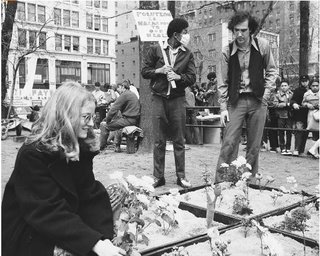 I still need to post the application that went to NYFA - it's the most precise and concise project proposal yet. Thats because I had a little help. I can't tell you how much you can get from having someone objective read over and give feedback. It makes such a huge difference! If only I had done it sooner, I think the other apps would have been stronger. Still, I am moving forward. I did hear from LMCC yesterday that I didn't get funding from them, but I will be asking for the feedback from the panel. Did you know that you can do that? I didn't until I heard it at one of our PDP workshops. I always assumed (silly me) that it was a closed door situation. But actually no, you can always ask for the panel feedback on an application - not everyone will give it to you, but for the few that do it can be invaluable. LMCC offered it before I even had a chance to ask! I am bummed not to get funding from them - it was a good sized chunk, and they would be such a great organization with whom to work. I will certainly pursue other opportunities with them.
I still need to post the application that went to NYFA - it's the most precise and concise project proposal yet. Thats because I had a little help. I can't tell you how much you can get from having someone objective read over and give feedback. It makes such a huge difference! If only I had done it sooner, I think the other apps would have been stronger. Still, I am moving forward. I did hear from LMCC yesterday that I didn't get funding from them, but I will be asking for the feedback from the panel. Did you know that you can do that? I didn't until I heard it at one of our PDP workshops. I always assumed (silly me) that it was a closed door situation. But actually no, you can always ask for the panel feedback on an application - not everyone will give it to you, but for the few that do it can be invaluable. LMCC offered it before I even had a chance to ask! I am bummed not to get funding from them - it was a good sized chunk, and they would be such a great organization with whom to work. I will certainly pursue other opportunities with them. I am working on the letters of intent at this point. After learning about writing an in-depth project proposal for the application, it can be hard to then scale it back and really approach the sales pitch in a shorter format. I still have to get the idea across, and explain why I am appropriate for the project, but in a lot fewer words.
I am working on the letters of intent at this point. After learning about writing an in-depth project proposal for the application, it can be hard to then scale it back and really approach the sales pitch in a shorter format. I still have to get the idea across, and explain why I am appropriate for the project, but in a lot fewer words. By the way - anyone have any comments of the notorious globally warmed weather we are having in NYC? Did you also notice the extraordinarily high Air Quality Index of the past few days. When I first moved to NYC (the first time - 13 years ago) the air here was pretty good. Most of our pollution blew into New Jersey or off to the sea. It didn't really hang around the island. Now with so many wealthy people living in Manhattan and even Brooklyn, there are a LOT more cars on the road (notice that?) with the increased traffic we have increased smog - thats why breathing in NYC is equivalent to smoking a pack a day.
By the way - anyone have any comments of the notorious globally warmed weather we are having in NYC? Did you also notice the extraordinarily high Air Quality Index of the past few days. When I first moved to NYC (the first time - 13 years ago) the air here was pretty good. Most of our pollution blew into New Jersey or off to the sea. It didn't really hang around the island. Now with so many wealthy people living in Manhattan and even Brooklyn, there are a LOT more cars on the road (notice that?) with the increased traffic we have increased smog - thats why breathing in NYC is equivalent to smoking a pack a day.Image at top: Woman planting flowers in New York's Union Square Park on the first Earth Day. (©Bettmann/Corbis. off the Pollution Issues website.)
Friday, November 10, 2006
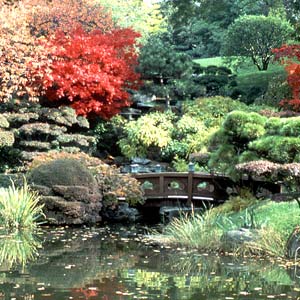
Bloging live from Green Brooklyn, part 2
Panel 2, The Natural Environment with Brooklyn Botanic Garden, ConEdison Solutions, Gaia Institute, Lower East Side Ecology Center, Slow Food USA, Solar Energy Systems, and Sustainable Table (the meatrix guys). Right now we are listening to the story of compost, I take my compost to the Farmer's market in Fort Greene, this part weekend I got a nice little container of it back. San Francisco, as part of their efforts to divert 75% of its waste from the dump, a large scale residential compost pick up program was enacted. The compost was resold to farmers in the surrounding areas. After about a year, the compost was a highly sought item. It seems to me that New York is an ideal place to create an extensive composting project. Apparently we already have a large compost center on Riker's Island.
Now we are listening to a discussion on the damon value of the urban jungle (my term), including street trees which save the city $3000 each year from their carbon sequestering and capturing rainwater runoff.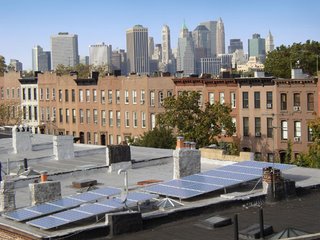
We just heard about the slow food movement and are now hearing about the perils of factory farming (antibiotics, manure lagoons, i will add a link because they are enormous). Next up, my dream city presented by Gaia. Green roofs, green streets, living edges and blue waters, creating a sustainable New York City. Storm water capture, permeable surfaces, urban wetlands, retring brownfields. Living edges means getting natural filters (like mussels). It's an incredibly nice day for sitting inside, but if we can make even half these ideas work we could have a lot more beautiful days.
The hardest part of these conferences are the question periods. I often think it would be more interesting to have the panelists discuss amongst themselves.
Final presentation for the day, the architects, Workshop/APD, who won the Global Green competition to design a green low income complex in New Orleans' Lower 9th Ward.
Following that was a "workshop" on transportation that because of time was focused on bicycling (which is fine with me). The presenter was really rushed and anxious to get across to the audience some points about which she was clearly passionate, all of which made for a rather frantic presentation. She did have some salient points to pass on including the idea that all a biker really wants is safe space (thats why they/we sit in crosswalks instead of squeezed between traffic and parked cars, its why a biker might jump a light - to get ahead of the traffic that is going to squeeze him out when passing the double parked car). She also talked about the idea that if bikers were better respected, then bikers will be more respectful (of traffic laws). As it is, bikers and pedestrians are forced to share precious little space while automobiles (and the 10% of new yorkers who drive them) take up the lion's share of the road. It would be nice to have a more car-free city - have you ever noticed how different the city looks when viewed from the middle of the street - its really cool! (You can stop on some streets in SoHo and look around - but most of the streets are too traffic-ridden to even try). For more information on livable streets - check out StreetsBlog.org and Transportation Alternatives (who could just as easily rename themselves traffic alternatives).
Thursday, November 09, 2006
oops double and triple posting
i have the final installment from Green Brooklyn, but my phone battery died, I will get it up tomorrow.
Random thoughts from the Green Brooklyn conference. Another thing that Jeffrey Hollender talked about was "real cost" the idea that if the actual cost of a thing (the cost of long term affects of pesticides on the land and workers, the cost of transporting foods and the carbon emissions effects from that.) You might remember that I want to do a project on that - to create a coffee shop "The Real Cost Cafe".
Next thought, why is it that at these events there are always lots of bits of trash to pick up? There's a 'gift bag' - I don't even know what's in it, I didn't pick one up because I don't need any more stuff. Then there are lots of little niggly brochures. Can't you just beam the info to my phone or something? Or take my email (not on a piece of paper, let of just input it directly) and you can email me more information.

Bloging live from Green Brooklyn!
Marty Markowitz started us of with the typically ebulliant Marty style. One thing he talked about was understanding global issues at the local level. That's a key part of Sea Change, so you can bet I will be trying to get a little face time with him!
He was followed by Jeffrey Hollender, President/CEO of Seventh Generation who gave an extemporaneous talk on business and sustainability. Although he was hesitant to use the term "sustainable" because he thought it was too vague. I have to agree, I also want to know just what it is that we are sustaining. We can't really sustain the current patterns (of population, lifestyle, business, etc).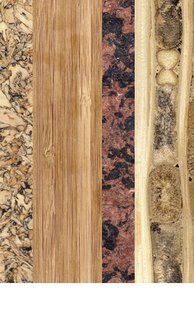
We are now in the first panel "The Built Environment" with a somewhat diverse panel, including Bettencourt Green Building Supplies, Cloud Institute for Sustainability Education, Conservation Services Group, Earth Pledge, Green Maps and Jonathon Rose Companies. Earth Pledge is doing some really great projects including the green roofs initiative, waste to fuel initiative and future fashion initiative. Their efforts are to promote new technologies in sustainable efforts.
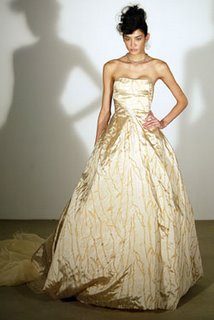 The question session, I am having a little difficulty figuring out just who the audience is for this conference. I am guessing businesses, educators, city officials (at least I hope some of those people are in the audience). More later.
The question session, I am having a little difficulty figuring out just who the audience is for this conference. I am guessing businesses, educators, city officials (at least I hope some of those people are in the audience). More later.
As a side note, check out the original Jonathan Rose Atlantic Center Design. Wouldn't that be a nice alternative?

More mapping...
CommunityWalk Map - Sea Change - NYC
On my way to Green Brooklyn today!
Monday, November 06, 2006
Art in the Contested City
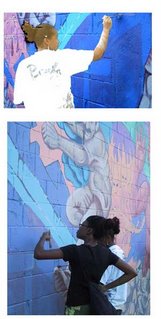 Last Friday I attended the Pratt Institute Center for Community Development "Art in the Contested City - A Conference Exploring the Role of the Arts in Contemporary Struggles over Urban Space." Which might prompt a couple of questions like, "Why isn't 'over' capitalized in the conference title?" and, "Why are you there?"
Last Friday I attended the Pratt Institute Center for Community Development "Art in the Contested City - A Conference Exploring the Role of the Arts in Contemporary Struggles over Urban Space." Which might prompt a couple of questions like, "Why isn't 'over' capitalized in the conference title?" and, "Why are you there?" I don't really have an answer to the first one, maybe a question of emphasis, and for the second question, I am here because I am interested in the role of art in social change, as well as artists working in communities which are not there own. The conference was very interesting, and only occassionally spiraled into a gentrification, anti development (Atlantic Yards, Williamsburg) rant. I would have liked to have seen more discussion on the role of individual artists in the community, but there were some really great organizations there and independent speakers. Sadly, I think they tried to cram waaaaay too much into one day, which meant that there really wasn't that much discussion and some very interesting ideas were only presented in a superficial manner.
I don't really have an answer to the first one, maybe a question of emphasis, and for the second question, I am here because I am interested in the role of art in social change, as well as artists working in communities which are not there own. The conference was very interesting, and only occassionally spiraled into a gentrification, anti development (Atlantic Yards, Williamsburg) rant. I would have liked to have seen more discussion on the role of individual artists in the community, but there were some really great organizations there and independent speakers. Sadly, I think they tried to cram waaaaay too much into one day, which meant that there really wasn't that much discussion and some very interesting ideas were only presented in a superficial manner.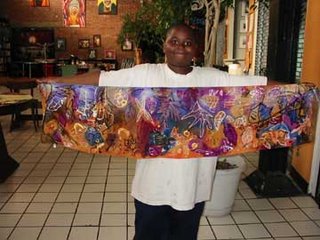
A sampler from the day, and people from whom I would love to have heard more from...
- Ann Markusen, Professor, University of Minnesota, Director of H. Humphrey Institue’s Project on Regional and Industrial Economics, author of “ The Artistic Dividend: The Arts Hidden Contributions to Regional Development” (links to a PDF)
- Tom Borrup, Minneapolis-based consultant, and author of “Creative Tools for Community Building”
- Rick Lowe, Sculptor and activist, and founder of Project Row Houses in Houston and Commissioner on the Municipal Arts Commission of Houston
- Esther Robinson, former Program Director of Film/Video and Performing Arts, The Creative Capital Foundation, and founder of ArtHome
- Amy Sananman, Founder and Executive Director of Groundswell Community Mural Project

- Beka Economopoulos and Jason Jones, Artists, Not an Alternative
- Jonathan Lethem, Author and board member of Develop Don’t Destroy Brooklyn
- Kellie Terry-Sepulveda, Co-director of The Point, Bronx
- Rosten Woo, Designer, writer, policy analyst and principal at the Center for Urban Pedagogy
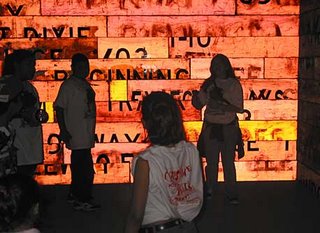 I got to watch the documentary, "Third Ward, TX" which was about the development of Project Row Houses. I knew about the artist installations that happened in the row houses, but didn't realize how much Rick Lowe and the other founders had really put into the community. They developend a Young Mother's Residential Program, to help single mothers go to college. They created a number of educational programs for the kids in the neighborhood, and they have worked to buy land in the area to protect the neighborhood from development. If you get a change to see the documentary (when it is released - we saw a pre-screening) I highly recommend it, it is a fascinating study on how arts and artists can be used in social activism.
I got to watch the documentary, "Third Ward, TX" which was about the development of Project Row Houses. I knew about the artist installations that happened in the row houses, but didn't realize how much Rick Lowe and the other founders had really put into the community. They developend a Young Mother's Residential Program, to help single mothers go to college. They created a number of educational programs for the kids in the neighborhood, and they have worked to buy land in the area to protect the neighborhood from development. If you get a change to see the documentary (when it is released - we saw a pre-screening) I highly recommend it, it is a fascinating study on how arts and artists can be used in social activism.I also hope to talk to Amy Sanaman and Rosten Woo about their work in different communities, and how they created effective partnerships with local organizations. One of the issues I am sensitive to in creating the Sea Change project is going into a neighborhood that is not my own and being able to effectively communicate the relevant information (this is why the local partnerships are so important). Tom Finkelpearl, Director, Queens Museum of Art, moderated the discussion on Arts Organizations as Community Partners, and he believed that 'drop in community art' is possible if the artistic vision is clear enough. You can bet I will contact him about that.
11/10: I realize that the excerpt from this run on "No Land Grab:" makes it sound like I might somehow be in favor of the Ratner Atlantic Yards project. I want to be clear that I am definitely not in favor of the development as it currently stands.
I am in favor of massive overhaul of the 421 tax abatement program, and city requirements for additional low-income housing (affordable doesn't mean enough). I am opposed to the massive hulk of a development with unbelievably impermeable street surfaces.
I am in favor of a stringently green development with NO parking, improved transit (although it sits on top of one of the best transit hubs in the city), generous community and public open space, and a development designed with community input.
Thursday, November 02, 2006
At least there are ups in manic...

Hoo-boy! What a roller coaster ride. I have just exited the latest manic phase of this whole thing. Mid October I decide that maybe fiscal sponsorship is a good way to go. I can tap into larger amounts of money and a greater pool of funders. Ford foundation anyone? So I contacted nyfa because I thought I had missed the last seminar. Turns out it was happening that night (fortuitous timing no?) I dropped everything and ran off to the seminar. It, like all of the others was extremely informative. I walked away KNOWING that Sea Change would be a great nyfa fiscal sponsor project. So in I dove. It meant researching grants that would be available to me through an agent and wading through them to determine eligibility and deadlines. Also meant re-working the grant again to fit the nyfa application. I also had an opportunity to submit 2 work samples, so images and a promotional packet were possibilities (of course that means making a packet). And in the middle of all this I was traveling to Philadelphia and Santa Fe with Creative Capital Professional Development Program.
 Philly was not a big travel deal, although it was a day away from work. Santa Fe on the other hand, while absolutely brilliant, was quite a lot of time away, and wouldn't you know it, I got sick the night before. So instead of being really productive on the 14 hour journey, I was intermittently sleeping or miserable. I made it through the weekend well enough, I think if I hadn't been sick I would have really enjoyed it. The food, through the haze of illness was very yummy, I loved the liberal use of chilies. My team of consultants were brilliant as always. Colleen with her powerful way of speaking (it is a subtle mix of assurance and gentle) and wonderful turn of phrase. Jackie, the spitfire, full of contagious energy and enthusiasm. Aaron, generous of heart and mind, thoughtful and encouraging, quick to smile and joke. I was introduced to a lovely crop of artist leaders, Erika quietly clever and boisterously creative. Daniel a well dressed charmer with style and elan. And Barbara with unending passion and determination. They all give out so much in the way of information, insight and encouragement. A favorite take away of the artist attendees is "are the dreams big enough, are the steps small
Philly was not a big travel deal, although it was a day away from work. Santa Fe on the other hand, while absolutely brilliant, was quite a lot of time away, and wouldn't you know it, I got sick the night before. So instead of being really productive on the 14 hour journey, I was intermittently sleeping or miserable. I made it through the weekend well enough, I think if I hadn't been sick I would have really enjoyed it. The food, through the haze of illness was very yummy, I loved the liberal use of chilies. My team of consultants were brilliant as always. Colleen with her powerful way of speaking (it is a subtle mix of assurance and gentle) and wonderful turn of phrase. Jackie, the spitfire, full of contagious energy and enthusiasm. Aaron, generous of heart and mind, thoughtful and encouraging, quick to smile and joke. I was introduced to a lovely crop of artist leaders, Erika quietly clever and boisterously creative. Daniel a well dressed charmer with style and elan. And Barbara with unending passion and determination. They all give out so much in the way of information, insight and encouragement. A favorite take away of the artist attendees is "are the dreams big enough, are the steps small
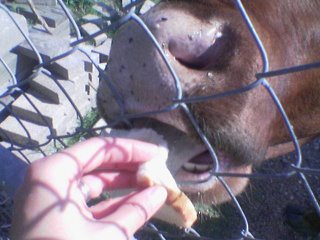 I took a very short trip to Houston on the way home, it was supposed to be a mini grant writing retreat, which it was, and I came back feeling pretty good about the proposal (although knowing it still lacked clarity, but unable to pull it through on my own). I worked on it more over the weekend, them handed it out for some serious editing. It came through that process as a much much better application. I cranked through the final rounds, put together a promo pack (and came up with some great ideas for presentation) got the image cd together, got it all copied, and dropped it off today. I was actually nervous (like knots in my tummy). This weekend will be recovery, then I start putting together a more slick packet and start a couple more grant applications. Thank goodness I added the cost of hiring an assistant into my budget!
I took a very short trip to Houston on the way home, it was supposed to be a mini grant writing retreat, which it was, and I came back feeling pretty good about the proposal (although knowing it still lacked clarity, but unable to pull it through on my own). I worked on it more over the weekend, them handed it out for some serious editing. It came through that process as a much much better application. I cranked through the final rounds, put together a promo pack (and came up with some great ideas for presentation) got the image cd together, got it all copied, and dropped it off today. I was actually nervous (like knots in my tummy). This weekend will be recovery, then I start putting together a more slick packet and start a couple more grant applications. Thank goodness I added the cost of hiring an assistant into my budget!


